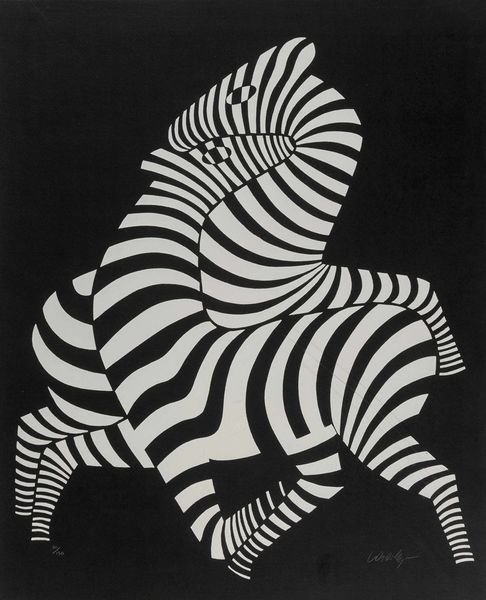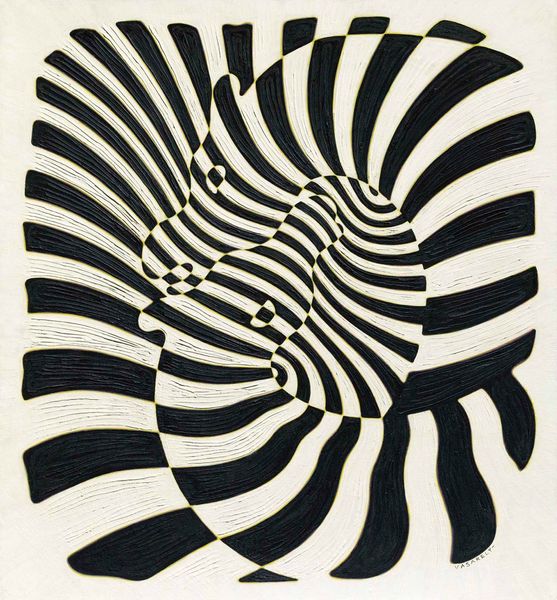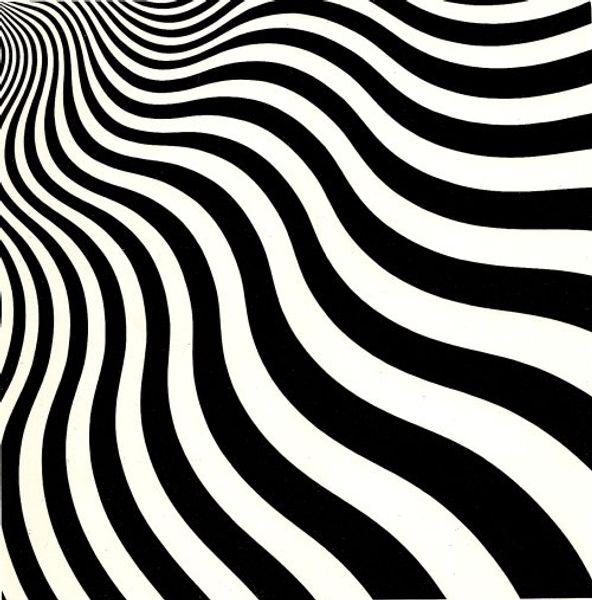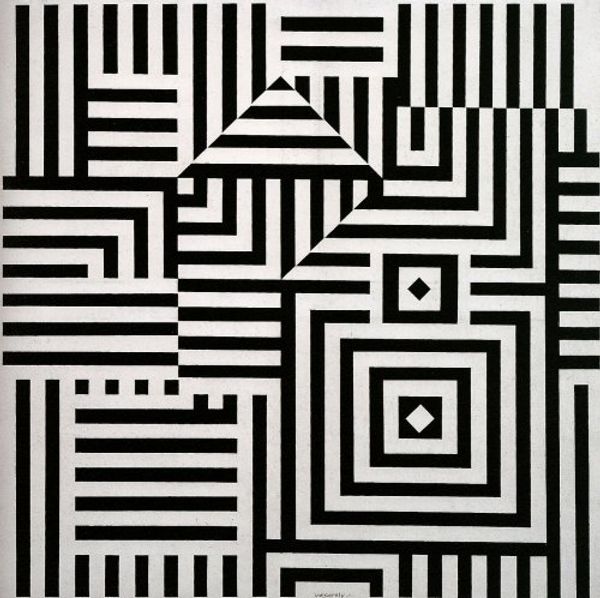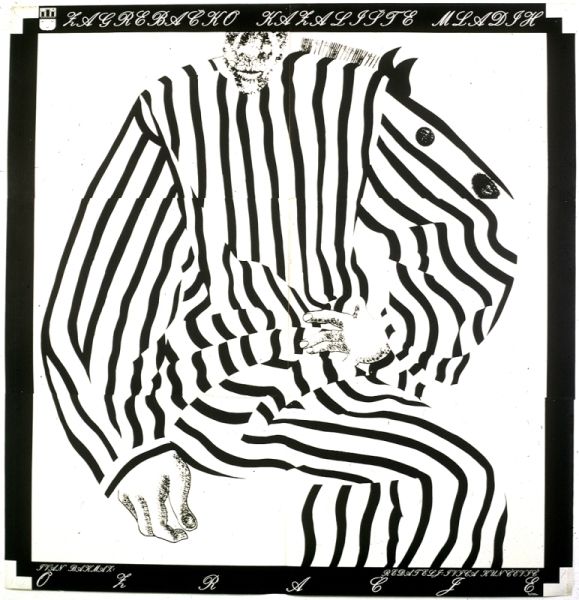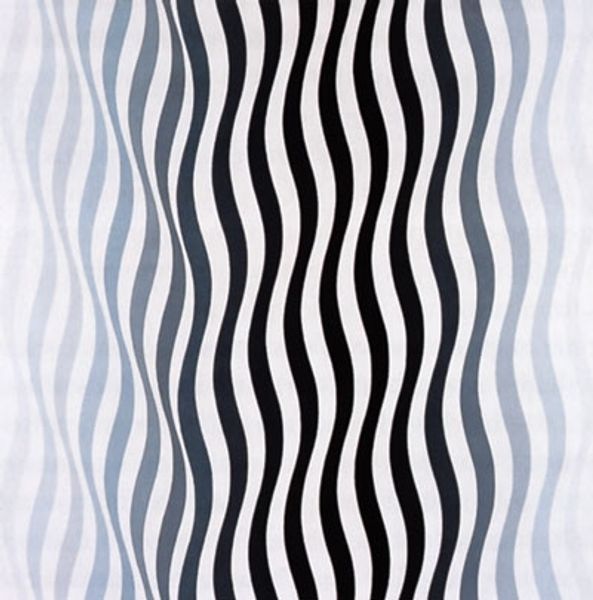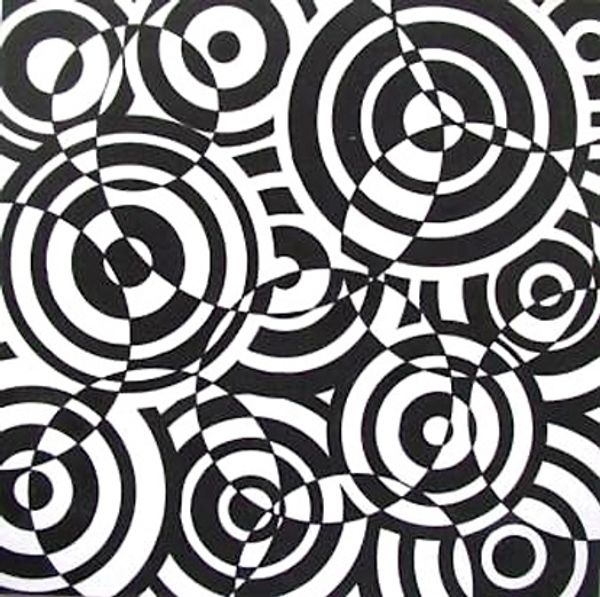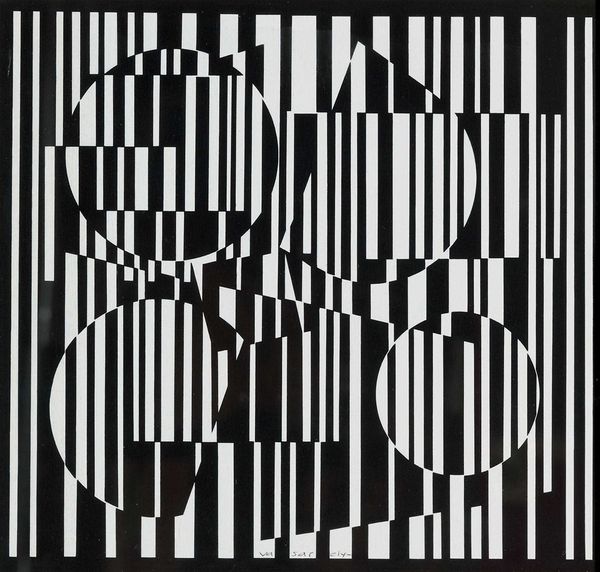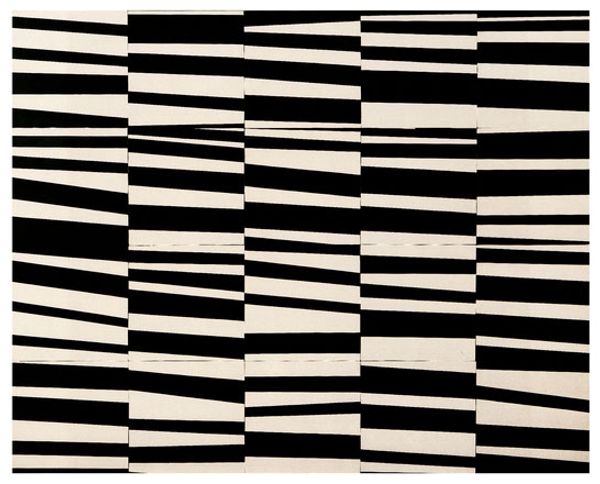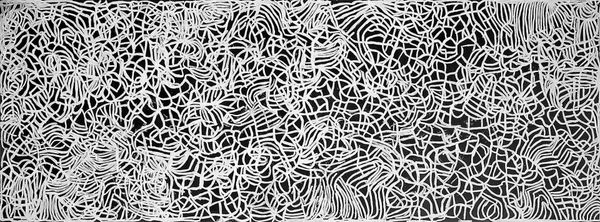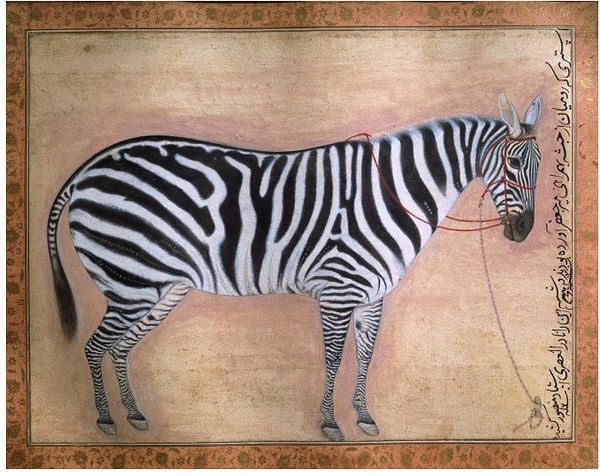
Dimensions: 52 x 60 cm
Copyright: Victor Vasarely,Fair Use
Editor: Okay, next up we have "Zebra" by Victor Vasarely, created in 1937. It's striking! Just black and white, but it gives the illusion of so much movement. It almost feels like the zebras are breathing. What are your initial thoughts looking at it? Curator: Well, placing this artwork in its historical context, we see it emerging during a period of increasing industrialization and a growing fascination with the optical. How does Vasarely tap into this socio-political environment, particularly considering the rise of abstraction and its relationship to realism? Editor: So, how would the people of the time have received such an unconventional piece? It's so different from traditional animal portraits. Curator: Exactly! The Zebra operates within a shifting understanding of representation. Remember, mass media was rapidly evolving then. Photography had already complicated the idea of 'capturing' reality. So artists were pushing the boundaries of what art *could* be. Consider how Vasarely's work fits within institutions dedicated to science, like early computer graphics or perception research. This work invites you to experience, more than just *see*. Editor: I see, it's less about perfect depiction, and more about…interaction. Does the rise of the museum also change what gets made and shown, and HOW it is seen? Curator: Absolutely. The museum, as a public institution, plays a huge role in shaping our understanding and expectations of art. Zebra being displayed transforms it. It ceases to be just an object and starts becoming part of a narrative of art history. How do you think that effects what you think when you look at this today, knowing its in the canon? Editor: Knowing what I know now really helps put it in perspective, not just a cool optical illusion, but a product and influencer of its time. Curator: Exactly, seeing art this way is much richer!
Comments
No comments
Be the first to comment and join the conversation on the ultimate creative platform.
